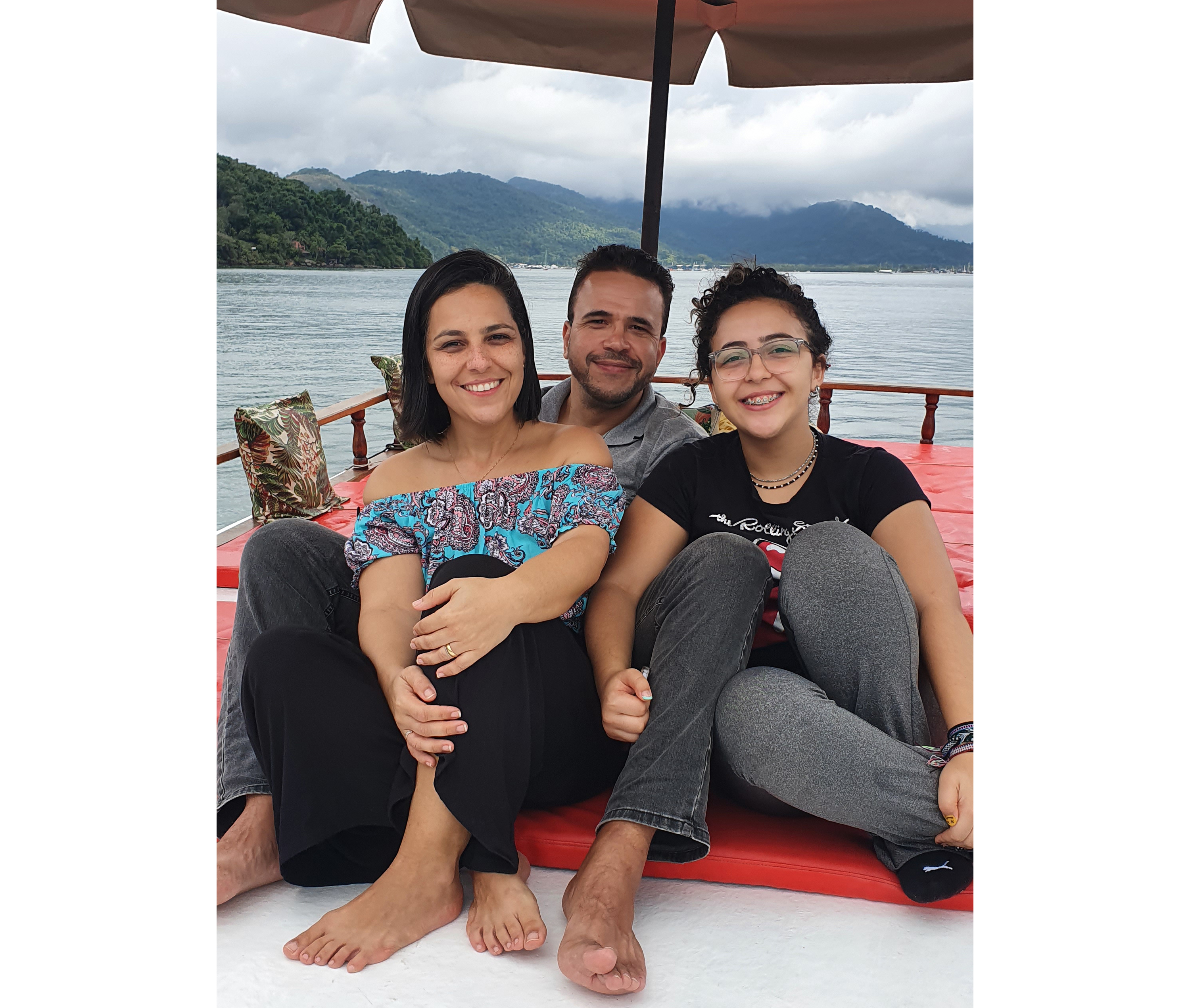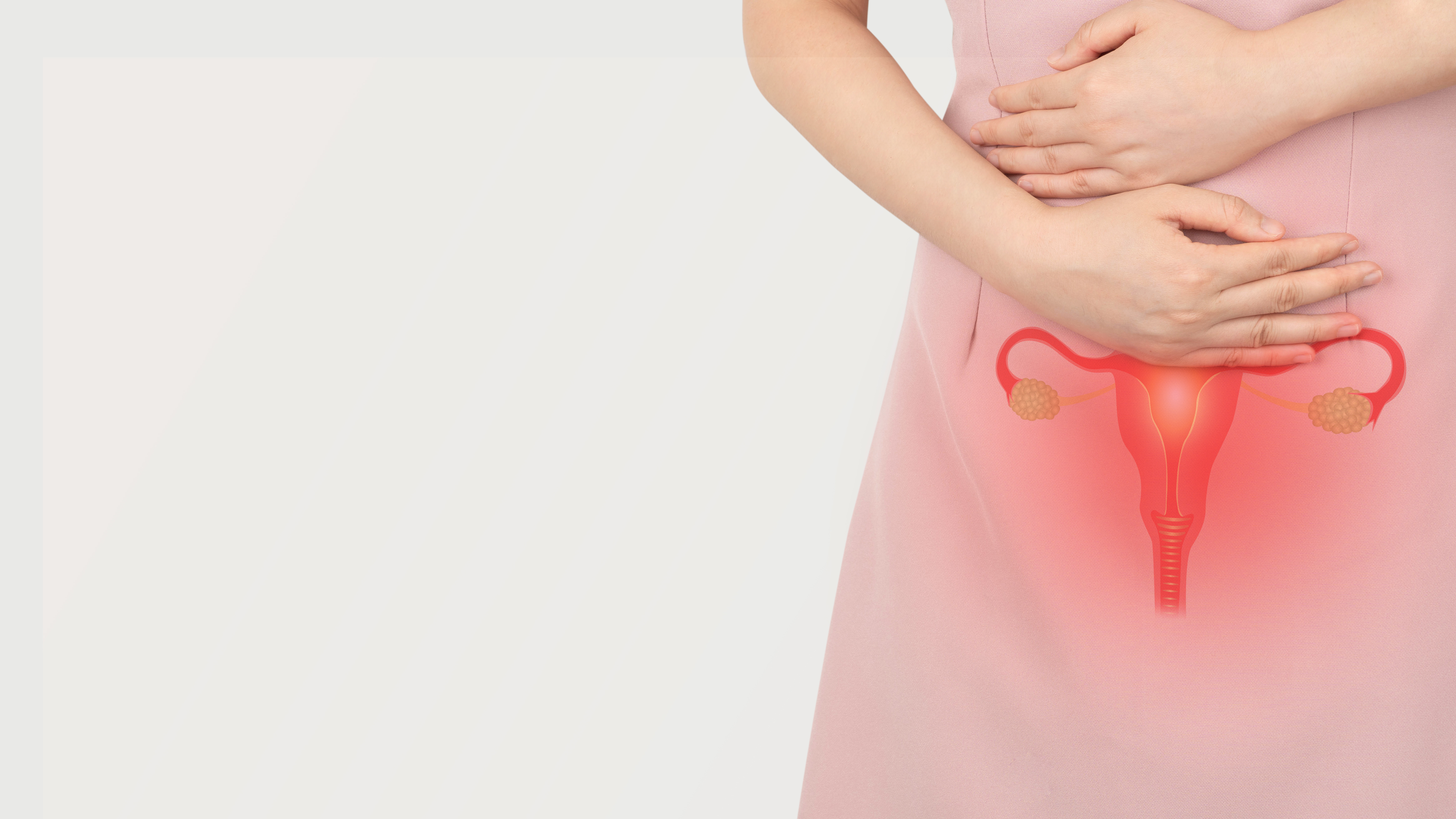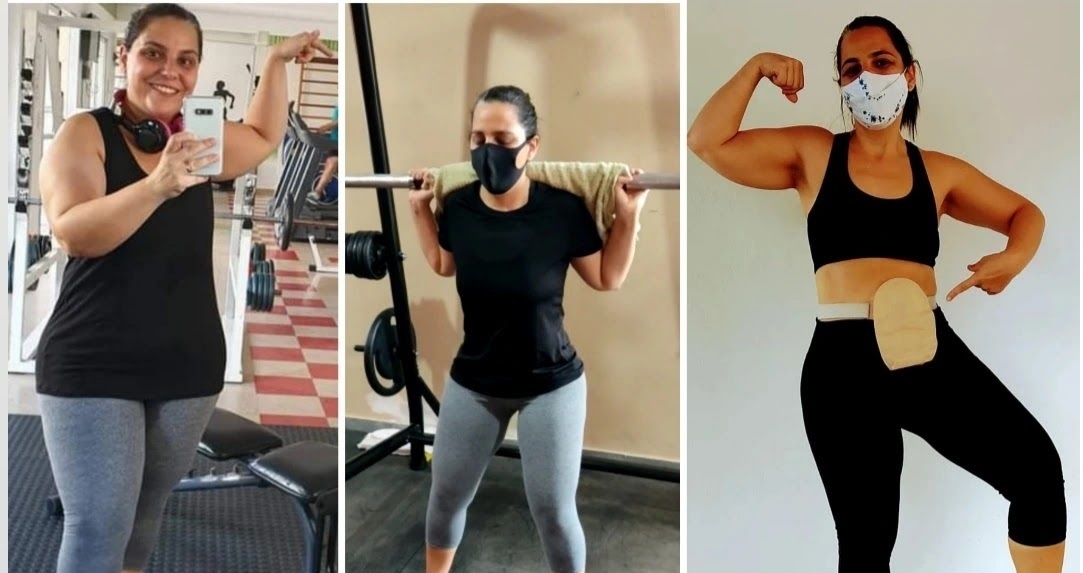Hi, my name is Andressa, and I am 39 years old. I’m from São Paulo, Brazil, although I’m currently living in Ubatuba, on the coast to the north. I’m going to share with you my surgical story and how I came to have my colostomy. After a diagnosis of endometriosis, I went through an intense process, with seven surgeries in 1 year.
In 2007, as a newly married woman, I discovered a lump in my breast. I had to undergo treatment and pause contraceptives. The idea was to have children after about 5 years of marriage, but I felt like the universe was sending me a message. One night, I had a dream that a beautiful girl knocked on my door and asked to come in. I replied, ‘It is not the right time; you should leave’. This little girl insisted, and she followed me around the house asking me to just let her in ‘this one time.’ With such insistence, we laughed together. I let her into my house and gave her a big hug. My intuition was right, and there I was, pregnant without knowing for about 1 month. Our daughter Lavinia was born in February 2009. She was beautiful, healthy and fulfilling the love that I didn’t know I was able to feel. From March 2009 to July 2017, I continued taking contraceptives. I had preventative check-ups annually, to detect any possible disease, but now I know that there is more to prevention than going to check-ups.


Andressa, her husband and their daughter Lavinia
Diagnosis
In March 2018, I ended up in the emergency room, with an intense pain in the abdomen. After examination, I learned that I needed surgery to remove my appendix. The biopsy showed scarring in the appendix, and it was possibly endometriosis. Around 2 months after I had my appendix removed, I started feeling strong cramps, a lot of abdominal pain and anal bleeding during my menstrual period. After many examinations, the doctors suspected a list of potential conditions, including ovarian cancer and adenomyosis, but the doctors couldn’t agree on a definite diagnosis. Finally, I took a test in a private laboratory that specialised in women’s health, and I received a report with the following diagnoses:
- Deep peritoneal endometriosis
- Endometriosis of the rectovaginal septum and vagina
- Endometriosis in the ureters
- Rectosigmoid intestinal endometriosis
- Uterine myoma
- Compression of sacral roots and nerve plexuses
I must confess that the fear was extreme, and not knowing anything about the subject simply terrified me.

Endometriosis is a condition where tissue similar to the lining of the womb starts to grow in other places, such as the ovaries and fallopian tubes. This can affect the menstrual cycle, bowel movements and fertility. It can be treated through medication or surgery.
Treating and learning about endometriosis
I returned to my trusted doctor, a gynaecologist in Guarulhos, who I had been visiting for over 9 years. He validated the diagnoses, and he told me that he didn’t recommend surgery, because there could be wider complications. My gynaecologist prescribed me a hormonal medication called goserelin, used to control endometriosis by causing a chemical menopause. This gave me some symptom relief just a few in days, and I was recommended to take two doses every 3 months until I was 50 years old. However, goserelin came with side effects, which were painful, both physically and emotionally. I had a lot of mood swings, hot flashes and abnormal sweating, as well as a loss of libido and vaginal dryness. At 35 years old, I didn’t believe I could accept this treatment with all these side effects for the next 15 years. After a month on goserelin, I started intense research about other treatments for endometriosis. To my surprise, there was little information on the subject, and it was even harder to find expert doctors. Eventually, I found three specialist surgeons who I could go to for advice, and they all indicated surgery. In March 2019, before deciding whether I should have this operation, I attended an event about endometriosis called Endotalks. This was a free social initiative bringing endometriosis experts together for a chat about the condition. I learned that this disorder affects at least 1 in 10 women of childbearing age in the world. The speakers addressed the audience in such a clear manner that I felt I was not alone anymore. I finally came to terms with my condition and the need for surgery. After several examinations, consultations with specialists and a multidisciplinary team effort, we scheduled the first surgery for 4 December 2019.
‘the doctors couldn’t agree on a definite diagnosis’
Starting my surgical journey
My first operation was done via a type of keyhole surgery called videolaparoscopy, using special video cameras and light sources, attached to the end of a long, thin tube. Everything went smoothly in the over 4-hour operation, and I had an excellent initial recovery. After 8 days, I came back for a routine scheduled check-up. This turned out to be a mistake, but a lucky one. I was 6 days early, as I’d been given me the wrong date, but this turned out to be another sign from the universe. When I arrived, I felt intense pain and discomfort in my lower back, even though I didn’t have the fever that usually tells my body that I am ill. I was examined by a doctor, and they found a channel (rectovaginal fistula) had opened and was leaking into my pelvis. I was rushed in for emergency surgery. I came out of this second keyhole operation with a new ileostomy, which would the contents of my bowels away from the fistula and into a pouch on my abdomen. This time, my recovery was complicated, and I spent 10 intense days in the hospital. In this time, my stomach stopped working properly, so I had a nasogastric tube fitted for feeding anddrainage. I also had a PICC line inserted my arm to administer drugs such as antibiotics directly into my vein.
‘I was rushed in for emergency surgery’
Difficulties
At first, I struggled to understand everything that was happening. I felt sad and especially dreaded the ileostomy. However, the situation could have been more complicated if it weren’t for the skill of the entire team of doctors, who took care of me all the time. Over time, I grew deeply grateful for the opportunity to live after such trauma. Considering all this, the stoma really didn’t shock me too much, and I got used to the pouch quickly. Just like the operation itself, I felt that it had been my salvation. It helped that I had understood it to be a temporary solution while my body needed to recover. After 3 months, I could have the ileostomy reversed to close the stoma and stitch my abdomen back up, which would allow me to pass waste as before and resume regular physical activity. When, on 15 February 2020, I had my ileostomy reversal, I was happy in the thought that this third operation would be the final one, and this ordeal had finally ended.
Another emergency operation
On 8 April 2020, only 2 months into a regular routine, my luck changed, and the fistula came back. I didn’t know what to expect. The doctors suggested that this time the output was at least draining out of my body instead of leaking directly into my pelvis. I had a fourth videolaparoscopy, where my stitched ileostomy was reopened and recreated. I did not believe what was happening; it felt like I was living in a nightmare. I spent almost a week without believing it and I hoped the fistula would close soon. Meanwhile, I was trying to rescue Andressa inside me, who would have to go through these adaptations again. A new emergency stoma was surgically created, and I would have to wait for this fistula to close again. Unfortunately, just over a month later, on 30 May 2020, I started leaking out of my body, which confirmed that the fistula had not closed as expected. The doctors and I knew the risk, but we were hopeful and had to combine our strength to start the process all over again. This included examinations and preparation for my fifth surgery. This time, when I entered the theatre ward again, it wasn’t an emergency. I had nutritional supplementation provided before the operation, refashioned intestines and an ileostomy. This surgery lasted for more than 8 hours, and the doctors gave their all, as my options were running out. Thankfully, the surgery went well, and I had an excellent postoperative recovery. After almost 3 months, I returned to the theatre room for my sixth surgery on 22 October 2020, which I was sure would be my last step. This was for my second ileostomy reversal, to close my reopened stoma and allow me to resume the life I had before.


Andressa in hospital
Seven surgeries in
Throughout all this, I learned that there are some things in our lives that we can’t control. At the end of November 2020, I start releasing gas and draining faeces through the vagina again. Another fistula had formed. I finally faced up to my fears and accepted the inevitable: that I would need a permanent colostomy to drain the output into a pouch for the rest of my life. On 12 April 2021, I had my seventh surgery, and this was the definitive colostomy. This whole journey was one avalanche of uncertainty. Constant frustration, a severe drop in immunity and a herpes zoster infection. A painful recovery in every single way. I had to learn to deal with my frustration and understand that, even at my best, things may not go as desired. I felt a deep pain in my soul. A feeling of mourning, exhaustion and a lot of sadness. On 12 April 2021, I had my seventh operation to form a permanent colostomy. This whole journey was one avalanche of uncertainty and constant frustration. I had a severe drop in immunity and a herpes zoster infection. It was a painful recovery in every single way. I had to learn to deal with my frustration and understand that, even at my best, things may not go as desired. I felt a deep pain in my soul: a feeling of mourning, exhaustion and a lot of sadness. Processing these events and reaching acceptance took a while and a lot of faith. However, I never questioned why of all this happened to me. I became involved with a network of other women with endometriosis and polycystic ovary syndrome. I worked on my self-acceptance, self-esteem and self-love. Self-love is looking in the mirror and accepting yourself, which in my case included my stoma. I accept and honour my story. I don’t feel like a warrior or a superwoman, and being an ostomate is not the only thing that defines me. I feel truly alive and grateful, free to make my choices and appreciative of life itself. A year before my surgeries, I started the path of self-knowledge. Little did I know that there I would begin a transformation that would completely change my personal and professional life.
‘my stitched ileostomy was reopened’
The power of being a woman
Today, I am a floral therapist. This includes intentionally using flowers and their specific properties, such as their smells and colours, for the positive emotions they can trigger. I am also training at a college in complementary therapies, such as existential analysis . This will allow me to help women to reconnect with their true essence and femininity through self-knowledge and honing of their talents. I have come to understand that, in daily life, wellbeing often means choosing yourself. My expectations are high, and I am to be the protagonist of my life, to love and respect myself and to take care of my deepest roots. However, I also want to connect with other people. I want to hear their stories, share their experiences and help them in their awakening. Therefore, I am glad to share my story in this article. This process is truly transformative. We all have something unique in our true essence. I know the challenges are huge, but what would life be if we didn’t have challenges? Challenges take us out of our comfort zone. You are the main character in the book of your life, so take responsibility for your existence. Which story do you want to live? Which story do you want to be told about you? Write the story, live it and be happy! I feel euphoric just sitting here, writing and sharing it with you. I feel alive ,and I feel the power of being a woman. I am not an ostomy bag. I am still Andressa.

Andressa in March 2020 (left) and September 2021 (middle and right)

Andressa Alvarez is a floral therapist based in Ubatuba, Brazil
Instagram: @andressaalvarez

